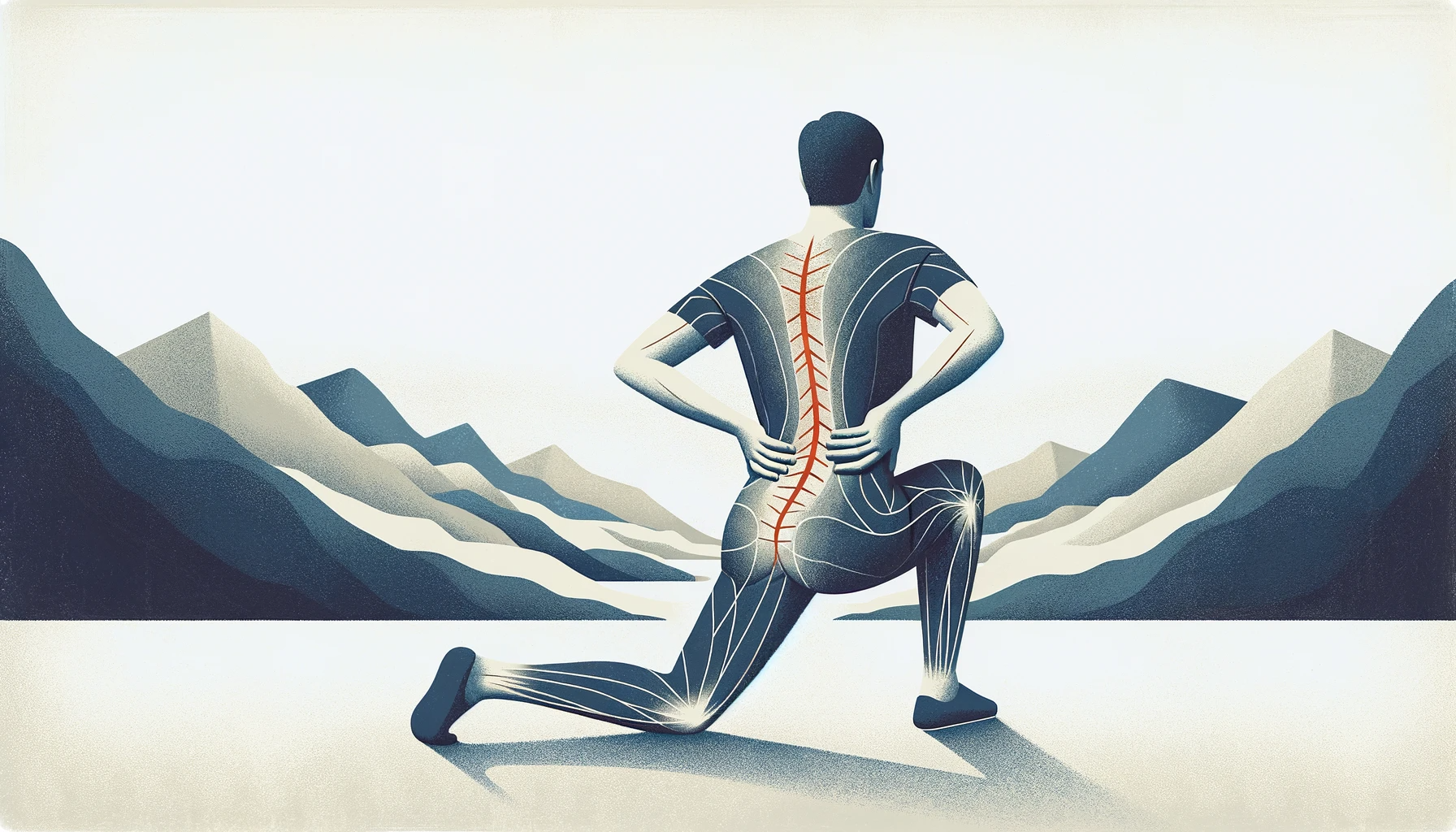How to Get Rid of Sciatica Pain: Top 10 Effective Piriformis Stretches (2024)
Sciatica Blog Key Takeaways © 2024 by HOPE Neuro-Acupuncure Rehab is licensed under CC BY-SA 4.0
Table of Contents:
Introduction
Sciatica, a condition characterized by pain that radiates along the path of the sciatic nerve, can significantly impact your daily life.
This nerve extends from the lower back, through the hips and buttocks, down each leg. A common culprit behind sciatica is piriformis syndrome, where the piriformis muscle irritates the sciatic nerve.
Understanding Sciatica
Imagine a long garden hose running from your lower back, through your buttocks, and down each leg. Now, think of this hose as your sciatic nerve, the longest nerve in your body.
Sciatica is like a kink or blockage in this hose, causing pain, tingling, or numbness along its path. It's like having a really bad leg cramp that won't go away. This pain usually happens on just one side of your body and can range from a mild ache to a sharp, burning sensation.
What Does Piriformis Mean?
Piriformis is a muscle in your buttocks that helps you to move your hip and leg. Imagine it as a small band that helps you twist or turn your leg outwards.
Sometimes, this muscle can get tight or swollen and press on the sciatic nerve, causing sciatica pain. This is like when you sit on a hard surface for too long and your leg feels numb or tingly. When the piriformis muscle causes trouble, it's like it's pressing down on that garden hose we talked about.
What Research Says About Sciatica
According to a study published in the "Journal of Neurosurgery: Spine," around 6-8% of people with sciatica have symptoms because of the piriformis muscle. You can find the article here.
Another research article in the "Journal of the American Osteopathic Association" suggests that treating the piriformis muscle can be a key to relieving sciatica pain. This article is available here. This research shows how important it is to keep this small muscle in your buttocks healthy and stretched to avoid pressing on your sciatic nerve.
By understanding what sciatica and the piriformis muscle are, we can better tackle the pain and discomfort they cause. Remember, it's like ensuring that the garden hose (your sciatic nerve) is free from any blockages or kinks (piriformis muscle problems) to keep the water (nerve signals) flowing smoothly!
Understanding the Piriformis Muscle
The piriformis muscle is a small, but significant muscle located deep in the buttock, behind the gluteus maximus. It plays a crucial role in allowing movement of the hip, upper leg, and foot away from the body.
Due to its proximity to the sciatic nerve, any spasms or tightness in this muscle can cause sciatica-like symptoms.
The Connection Between Piriformis and Sciatica
Piriformis syndrome occurs when the piriformis muscle spasms and causes pain. This spasm can also irritate the nearby sciatic nerve, triggering pain, tingling, and numbness in the back of the leg and into the foot.
Therefore, stretching the piriformis muscle is an effective way to relieve these symptoms.
Top 10 Piriformis Stretches for Sciatica Relief
Stretch 1 - Supine Piriformis Stretch: Lie on your back with both knees bent. Cross one leg over the other so your ankle rests on the bent knee. Gently pull the bottom knee toward your chest until a stretch is felt in the buttock.
Stretch 2 - Seated Stretch: Sit on a chair and cross one leg over the other with the ankle resting on the knee. Gently lean forward, keeping your back straight, until you feel a stretch in the buttock.
Stretch 3 - Standing Piriformis Stretch: Stand and place the leg to be stretched on a surface at waist height. Lean forward with your back straight and hold the stretch.
Stretch 4 - Outer Hip Piriformis Stretch: Lie on your back and bend your knees. Cross one leg over the other, so your foot is next to the thigh. Pull the knee of the bent leg directly across the midline of the body using your hand until a stretch is felt.
Stretch 5 - Long Adductor Stretch: Sit on the floor and stretch your legs out as far apart as possible. Tilt your body forward at the hips and place your hands on the floor, keeping your back straight.
Stretch 6 - Short Adductor Stretch: Sitting on the floor, put the soles of your feet together in front of your pelvis. Hold your ankles and gently push your knees down with your elbows.
Stretch 7 - Side-Lying Clam Exercise: Lie on your side with the hip to be worked on top. Bend your knees and position them forward so that your feet are in line with your spine. Keeping your feet together, raise the top knee.
Stretch 8 - Hip Extension Exercise: Start on your hands and knees. Keep your neck straight and extend one leg backward and upward, keeping your knee straight.
Stretch 9 - Supine Piriformis Side Stretch: Lie on the floor with the legs flat, and raise the affected leg by placing the foot on the floor outside the opposite knee. Pull the knee of the bent leg across the midline of the body using your opposite hand or a towel.
Stretch 10 - Buttock Stretch: Sit on the floor with one leg straight out. Bend the other leg and place the foot flat on the floor on the outside of the straight leg. Twist your torso to look over your shoulder on the side of the bent leg.
Duration and Frequency for Piriformis Stretches
After learning about the stretches, you might wonder, "How long and how often should I do these?" Well, here's a simple guide:
How Long: Aim to hold each stretch for about 20-30 seconds. It's like waiting for a short commercial to end – not too long, but just enough!
How Many: Try to do each stretch in sets of 3. It's like repeating your favorite chorus in a song three times because it feels good.
Frequency: Doing these stretches once a day is great, like brushing your teeth. If you're really feeling stiff, you can stretch twice a day – once in the morning and once in the evening.
Remember, like any exercise, it's important to listen to your body. If something hurts or doesn't feel right, it's okay to stop and try again later or adjust the stretch to what feels best for you.
Must-Read Tips for Safe Stretching
Start slowly and gently, gradually increasing the intensity.
Avoid bouncing or jerky movements which can cause muscle strain.
Breathe deeply and consistently during stretches.
If you feel pain, not just a stretch, stop immediately.
Consistency is key – practice these stretches daily for the best results.
Complementary Therapies and Lifestyle Changes
In addition to stretches, consider these complementary therapies and lifestyle modifications:
Acupuncture and massage therapy can help relieve muscle tension.
Physical therapy can provide personalized stretching and strengthening exercises.
Maintain a healthy weight to reduce pressure on the sciatic nerve.
Adopt an ergonomic workspace to reduce strain on your lower back.
Regular exercise, like walking or swimming, can improve your overall spinal health.
Conclusion
Dealing with sciatica can be challenging, but incorporating these piriformis stretches into your daily routine can offer significant relief. Remember, it's not just about temporary pain relief – it's about creating a balanced, healthy lifestyle to prevent future flare-ups. For persistent pain, always consult a healthcare professional.
For more information, visit our sections on Traditional Chinese Medicine (TCM), Physical Therapy, and Sport Medicine. Read our patient Testimonials to learn about others' experiences with sciatica relief.
If you want professional help with your sciatica, then come to our clinic in San Jose, California! Just sign up below and we’ll get you started on the right path right away.
On This Page



